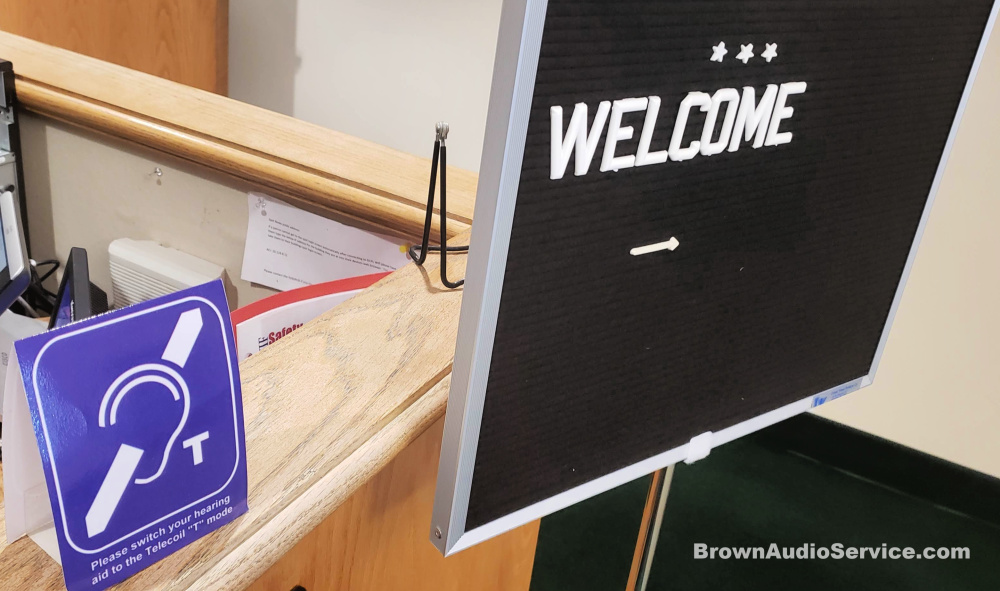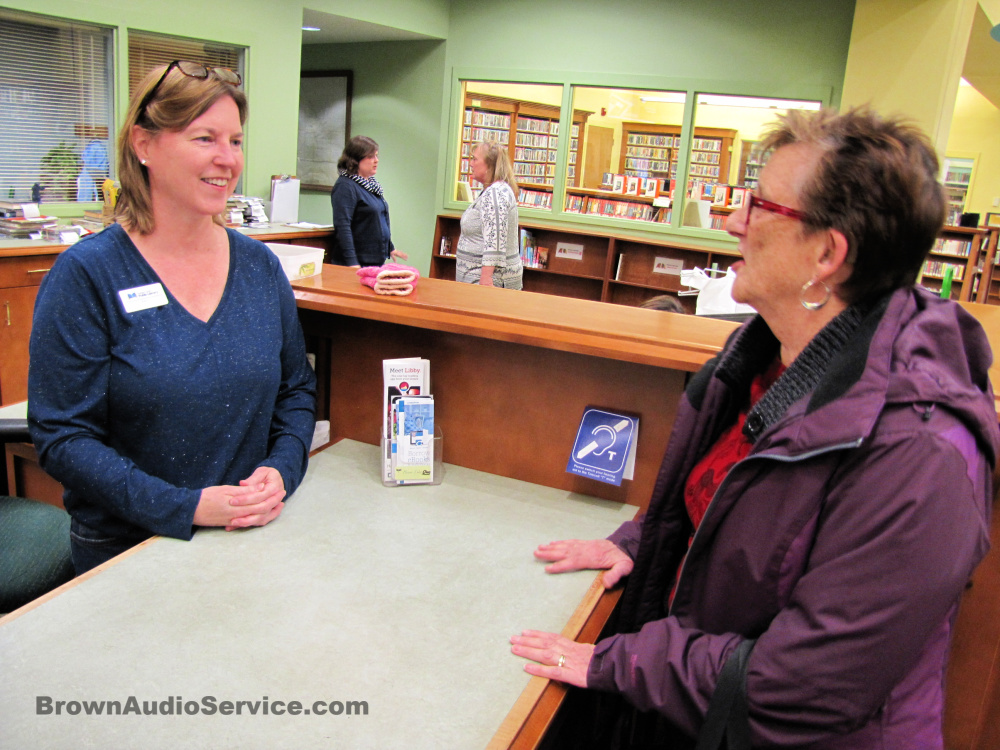
The library. A place where you can get a wide variety of information, help, and tools for living a full life. The librarians are keepers of great knowledge, are tireless assistants, and also the maintainers of a quiet place to read, study, and learn.
Being a quiet place, on the other hand, means instruction and assistance are often shared with a quiet voice. A voice that can be very difficult for those with hearing loss to hear and fully comprehend.
Hearing loss is a major public health issue affecting 1 in 5 people.
How can libraries be more helpful to those with hearing loss?
A hearing loop in a library reduces barriers for patrons with hearing loss. They may find it embarrassing to ask a librarian to repeat instructions or information and may walk away uncomprehending simply because they are too embarrassed to ask their question one more time.
How can a hearing loop help? And wouldn’t it be expensive to loop the entire library?
A counter hearing loop, either at the information desk or check-out, is a very cost-effective way to help persons with hearing loss.
When a hearing aid user selects the ‘T’ setting; he or she can pick up the sounds spoken into the microphone at the desk instead of the hearing aid’s internal microphone. This results in improved speech understanding because the listener receives a clear signal without any background noise.
A hearing loop would also be helpful in public meeting rooms.
Most libraries have one or more meeting rooms that are available to the public to host or attend seminars, trainings, and even government functions, such as such as city council meetings.
Most of these rooms also have a microphone and/or audio-visual system in them, which means they are also legally required to offer hearing assistive technology to users to meet ADA regulations related to access for persons with hearing loss. A hearing loop can help libraries meet ADA standards for those with low hearing capacity.
In new libraries, hearing loops are becoming the standard hearing assistive technology offered because of the high level of user-satisfaction and the ability for patrons to use the system without the librarian or library workers having to maintain and checkout additional equipment.
Hearing loops also make it possible for patrons to access library services without their hearing loss being detected which reduces embarrassment and enhances independence and satisfaction.
It is essential for librarians and library workers to assess their local library resources to make sure that hearing assistive technology is present for the community.

Loop systems are universally recognized with a symbol which will be posted on the rooms in which the technology is available.
Several local libraries now offer service desk hearing loops and/or meeting room loops for patrons who use hearing aids or cochlear implants.

When a hearing aid user selects the ‘T’ setting; he or she can pick up the sounds spoken into the microphone at the desk instead of the hearing aid’s internal microphone. This results in improved understanding because the listener receives a clear signal without any background noise.
What is a hearing loop? A hearing loop system is an Assistive Listening System that transfers sound—from a microphone or TV—directly to your hearing device or cochlear implant, via a tiny and inexpensive telecoil (t-coil) receiver.

